AI Hallucinations Are Driving More MLR Rejections
Oct 23, 2025 | 5 min read

Many pharma marketers have a new problem: their AI tools are fast, but they’re still saying things that aren’t true. Even after training these tools on approved content, the copy sometimes sounds risky. Why is that happening—and what can you do about it?
The Problem: Risky AI Copy Isn’t Going Away
Imagine this: You just asked your new AI tool to write a product email. You trained it using your company’s approved content. It should be safe, right?
But when you read the draft, something feels off. The AI talks about benefits your drug isn’t actually approved for. It mentions a study you’ve never heard of. It even skips your safety language.
This is more than just annoying—it’s dangerous. In pharma, saying the wrong thing can mean regulatory trouble, warning letters, and even loss of trust from your team.
So, why is your trained AI still making mistakes?
What’s Really Going On?
AI hallucination is the term experts use when tools like ChatGPT or Claude make things up. That includes fake facts, false claims, or invented studies. It’s not because the AI is trying to lie. It just doesn’t know the difference between what’s true and what “sounds right.”
Even when you train the AI on internal, approved content (called “fine-tuning”), it can still hallucinate. Here’s why:
- AI guesses when it’s unsure. If your prompt asks a question that isn’t answered clearly in the training data, the AI will try to “fill in the blanks.”
- It mixes up facts. It might blend two correct ideas into one wrong statement.
- It doesn’t understand rules. The AI doesn’t know the difference between on-label and off-label claims—unless you teach it, clearly and repeatedly.
- Style ≠ Truth. Your fine-tuned AI might learn to sound like your brand, but that doesn’t mean the content is accurate.
In one real example, an AI-generated legal document included six court cases that didn’t exist. They looked real—citations, names, everything—but the model made them up. The same thing can happen in pharma content.
Real Example: When AI Gets It Wrong
A pharma marketer asked her team’s AI to write a webpage about an arthritis drug. The drug is approved for adults—but the AI added a line saying it also works for teens.
That wasn’t true. The model wasn’t trying to lie—it just “guessed” that it could help younger people too. That one made-up line would have been a big compliance issue if it had gone live.
So, What Can You Do?
Here’s the good news: you can fix this. You don’t need to stop using AI. You just need to put up guardrails—simple rules, smart prompts, and tools that keep your AI focused and safe.
Here are five clear steps you can take:
1. Use Clear, Simple Prompts
Instead of saying:
“Write a paragraph about our diabetes drug”
Try this:
“Write 100 words using only the approved information below. Do not add anything that isn’t in this list.” (Then paste your claims and safety content.)
By narrowing the request, you’re telling the AI: “Stay in this box.” That helps prevent guessing or adding risky content.
2. Add a Fallback Plan
Sometimes, the AI won’t know the answer. That’s okay! It’s better to have your tool say:
“I don’t know. Please check with a medical reviewer.”
…than to make up an answer.
Teach your tools and your team: no answer is better than the wrong answer.
3. Check What the AI Writes—In Real Time
There are tools that scan AI-written content as it’s being made. These tools look for problems like:
- Missing safety language
- Unapproved claims
- Copy that sounds “too good to be true”
Platforms like Sitecore and Gradial let you add these kinds of checks into your content workflow. So the risky stuff gets flagged before it ever hits legal or medical review.
4. Connect Your AI to a Trusted Content Library
This is a powerful trick: Instead of hoping your AI “remembers” the facts, link it directly to your approved content library.
For example:
- Use Sitecore as your content management system.
- Use Gradial to organize modular content into blocks (like claims, disclaimers, safety notes).
- Use an AI tool like Claude that supports “grounding” — this means the AI pulls answers from real documents only.
This setup means your AI can only answer using your data, not random info from the internet or general knowledge. That cuts down on hallucinations in a big way.
5. Never Skip Human Review
Even the best AI tools make mistakes. Always include human review—especially for anything public-facing. Think of the AI as a fast assistant. It can write the first draft, but your team still owns the final call.
What Happens If You Don’t Fix It?
If you let hallucinated content go out the door, here’s what could happen:
- Your legal and medical reviewers lose trust in your tools.
- You get stuck in long review loops.
- Worst case: regulators flag your copy for being false or misleading.
That’s why more and more pharma teams are tightening their AI process now—before things go wrong.
What Success Looks Like
Teams that put up strong AI guardrails are already seeing wins:
- Faster review cycles
- Fewer MLR rejections
- More confident copy teams
- Lower risk of compliance issues
And they’re not giving up creativity—they’re just using AI with smarter controls.
Want Help Putting Guardrails in Place?
CI Life helps pharma brands design smarter content workflows using AI. From prompt templates to system integrations with tools like Sitecore and Gradial, we’ll help you scale content creation without risking compliance.
Book a working session with our AI team →
If this post hits home, you’ll also want to check out:
Your AI Tools Are Generating Risky Copy — Here’s How to Make Them Compliant
That post explains how to build review workflows that catch risky AI output before it becomes a problem.
Final Thought
You trained your AI. That was a great first step. But training isn’t enough on its own. Without the right prompts, content checks, and guardrails, even a smart AI will say the wrong thing.
Let’s make your tools safe, smart, and fast—so your team can spend less time fixing content and more time building what’s next.
Speak With Our Team
Let’s work together



 Gradial
Gradial  PEGA
PEGA 




